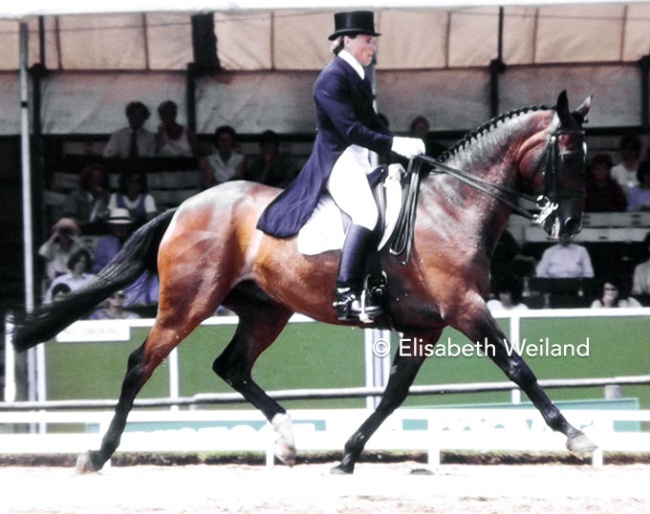
-- Text by Silke Rottermann © Eurodressage.com - No reproduction allowed
The success story of British Dressage is one paved by passionate and determined women who were trailblazers for the sport against the odds. These women had a never ceasing optimism because „there was not only a great leeway to make up, but also a considerable resistance to overcome, for England was still fox-hunting country“, Dorian Williams OBE, a legendary equestrian journalist and former chairman of the BHS, wrote about the beginnings of dressage in the U.K.
One of these pioneering women and probably one of the most remarkable was Patricia „Trish“ Gardiner, who passed away on 20 August 2025, shortly after her 90th birthday. She stamped dressage in Great Britain in multiple ways.
Valegro's Happy Hacker
To the younger generation she was, thanks to social media, perhaps only known as "Valegro’s happy hacker," but little do many know that Trish Gardiner was so much more than that. She was the equestrian super star avant la lettre and as rider, trainer, judge significantly influcened the "long way before Britain can claim to be of comparable standard to that experienced in so many other countries“ (dixit Williams).
Gardiner was one of British dressage’s most loyal and longest serving members and she remained committed to horses and riders all her life.
A Start in Hunting, Dreaming of Top Eventing
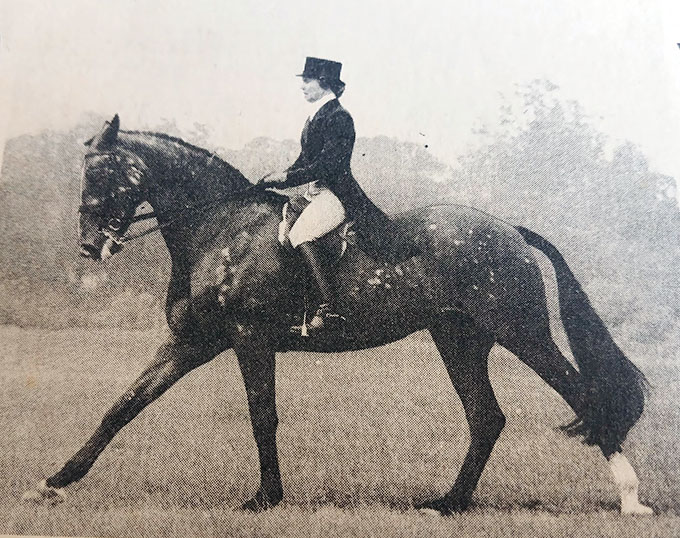
In 1956 she got the Welsh cob cross Whimbrel as a birthday present and it was no surprise that she bred the beloved mare to the accomplished thoroughbred stallion Kadir Cup xx in the hope to get a future hunter. Whimbrel’s son Manifesto was born in 1964, a strong boned horse with characteristic spots on his body, and a huge engine. Little did anybody know at that time he would later tempt the Germans to offer a blank cheque for him…
Like so many Trish dreamt of competing at the hallowed grounds of eventing, Badminton. When she competed Welton Gameful xx, she came close to achieving this goal at the beginning 1970s. The horse later became an extremely influential foundation stallion owned by the late Sam Barr, a pioneer in eventing horse breeding,
At Wylye, home of the late Lord and Lady Russell, however, her dreams were shattered, breaking both her legs in a nasty fall cross-country. Trish briefly returned to eventing when she defied the doctors' prognosis and was in the saddle again after her serious accident, but she soon turned her eyes on the discipline as the winds of change in her country slowly hit its stride: Dressage.
Turn to Dressage
British dressage at the beginning of the 1970s was still a far cry from the importance and influence the other two Olympic disciplines had in the country at that time, but there were some beacons of hope lit by a highly committed group of riders that this was about to make a change, slowly, but surely. Or to say it in the words of the also recebtkt deceased Jane Kidd, "everybody was eager to learn and turn British into a dressage nation.“
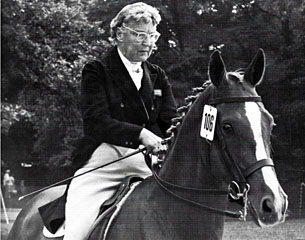
It was around that time that riders interested in dressage would turn more to continental warmbloods, but not so with Trish. When she decided to switch disciplines, her home-bred Manifesto would go down the dressage lane with her and she turned to nobody else than Robert Hall for that.
Finding Training: Robert Hall
While Britain suffered a serious lack of higher level dressage trainers right after the war, the handful of dedicated ladies had to turn to continental trainers for teaching clinics on the island. Brit Robert Hall was practically the first to focus on dressage and establish his famous "Fulmer School(s) of Equitation."
Trained and stamped by the Spanish Riding School, but well aware that British horses were no Lipizzans, the husband of Dutch born British dressage Olympian and O-judge Jook Hall quickly became the man to turn to for the secrets of proper riding and higher level dressage. He was known for condemning training gadgets and had a focus on the horse’s physical and mental relaxation in order to achieve what dressage is all about: flexibility, impulsion and balance.
Although the small elite of British dressage ladies would also rely on trainers from the European mainland for inspiration and help, many of them trained with Hall at some stage in their careers. Trish herself sought help from Hall until the Alternate Olympics in 1980, after which she continued on her own. She did spend some time with German trainers Herbert Rehbein and Georg-Otto Heyser.
Manifesto
Gardiner and Manifesto got thorough introduction to the principles of classical dressage and soon appeared in lower level classes, first at Goodwood, before making their international debut in 1976 at small tour level in Rotterdam.
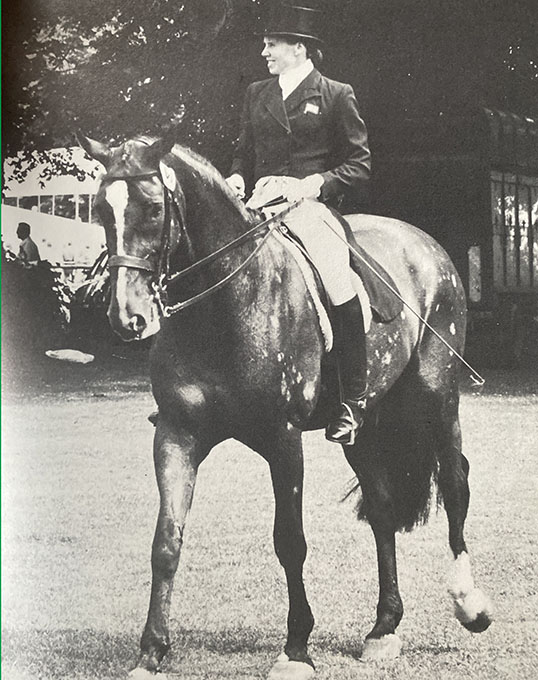
1980 Alternative Olympics in Goodwood
With her own so different Manifesto she did well at small tour level, even placing highly internationally. They were, for example, 6th in a field of 17 at the CDI Paris in the autumn of 1977. However, the horse was knocking at the door of Grand Prix and in 1978 both they got selected on the British team as the individual rider for the first ever dressage championships held on British soil — another milestone — the World Championships in Goodwood.
Trish’s team debut in front of 14,000 enthusiastic people over the days - a fact which even the German press interpreted as a clear sign that dressage in Great Britain had stepped out of the shadow - was pretty impressive as she was 2nd best of the 4 British ladies in the Grand Prix.
"Manifesto was a big horse and simply magnificent, with no physical limitations to his work“," said Bill Noble. The New Zealand Grand Prix rider began as Trish’s working student and in the 1980s became her business partner. He had the great opportunity to ride Manifesto after his retirement as Trish’s student.
Trish and Manifesto went on from Goodwood representing Great Britain not only at the biggest shows like legendary CHIO Aachen, in a way the „Badminton“ of dressage, but also at the 1979 European Championships in Denmark and at the 1980 Alternative Olympics. These were held in Goodwood after the most important equestrian nations refused to go to the Moscow Olympics due to the Russian invasion and war in Afghanistan in 1979.
Manifesto’s talent and quality did not go unnoticed and promoted Germans to offer a blank cheque for him, as Carl Hester reminisced to Eurodressage in an interview on 26 August 2025. Trish stuck to her horse of a lifetime. "She was always very loyal to her horses," as Bill Noble confirmed. "The Dutch later tried to buy Wily Imp, with the same result.“
Wily Imp xx
It was Bill who brought home Trish’s next future Grand Prix horse, though it was entirely due to Trish’s sensitivity, patience and extraordinary skills that the high strung thoroughbred Wily Imp xx became an Olympic horse.
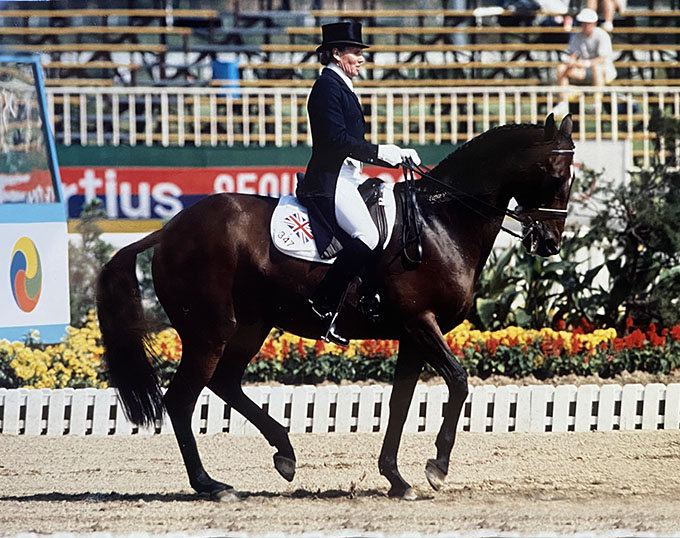
In 1987 Trish won the British Dressage Championships with him and was back on her country’s team at the European championships held at Goodwood. A year later she represented Great Britain as one of four ladies at the 1988 Olympic Games in Seoul where Wily Imp placed 23rd of 53 starters. Whereas this was already no mean feat, very renowned German equestrian magazine St. Georg even dared to claim that „the British riders seemed to suffer from the prejudice that English cannot ride dressage anyway. Three of their horses had been extremely noble, elegant and light-footed models of which we in particular liked the thoroughbred Wily Imp who was steered with great tact and almost fault free through the program by Tricia Gardiner.“
Wily Imp went on to be selected one last time on the British team at the 1991 European championships in Donaueschingen (GER), after which he became a schoolmaster for a few of Trish's carefully selected working students who could learn a lot from the very fine tuned sensitive gelding, before he ultimately retired to the field.
Trainer and Clinician
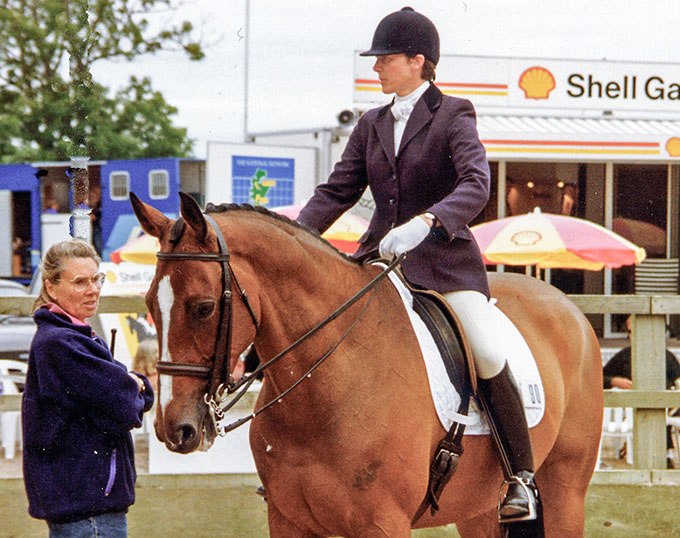
"Trish’s training yard wasn't big, she would usually only have a couple of her own horses, plus occasionally some in for training. She was always more interested in quality, not quantity. That gave her the freedom to travel; she regularly taught not only at her place, but also elsewhere around the country, and occasionally abroad, in Italy and Spain. She would rarely teach on her own horses - she would only do so when she knew and trusted the pupil very well," Noble reminisced.
One of these lucky ones was Sally Newcomb who started training with Trish as a young instructor after winning a bursary. "Trish Gardiner gave me the fabulous opportunity to ride Wily Imp as a schoolmaster and the incredible opportunity to compete Wily Imp following his international career with her," said Newcomb. "I competed Will at PSG and Inter I for a couple of years and learnt so much. Trish was not just an exceptional horsewoman, but an inspiring teacher. I loved her attention to detail and knew if she said ‘good!’, it really was good! She leaves behind such a legacy. Every time I teach my pupils, she is there with me as I pass on all that she taught me over the decades. She was my mentor and a dear friend and I’ll really miss her.“
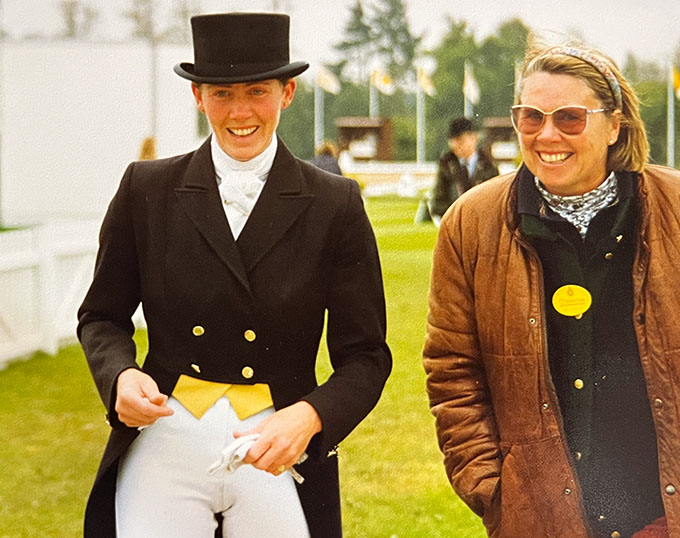
British dressage trainer Tessa Thorne spent a decade working as barn manager for Trish as of 1984. She groomed Wily Imp at the Seoul Olympics. Tessa remembers, "in 1984, I began working with Trish as her head girl at her dressage yard in Great Somerford. Having trained with Robert Hall at Fulmer, I was fascinated by Trish's approach, which was also heavily influenced by his system. My ten years with Trish were a period of intense learning. She taught me a vast amount about training horses to Grand Prix level along with the day-to-day management of top-tier dressage horses. Trish's methods were consistent, practical, and above all, fair. She had a special knack for working with sensitive horses, particularly the Thoroughbreds she so adored, and her training, inspired by the Spanish Riding School, was built on a foundation of lightness and positivity.“
Training the Sensitive Horse
Trish’s last Grand Prix horse was the beautiful grey British bred Moon Tiger. Foaled in 1986, this son of the eventing sire Java Tiger xx was another sensitive horse that Trish trained from a young age to become a well respected Grand Prix horse on the British circuit, placing for example at Hickstead and at the Royal Windsor Horse Show.
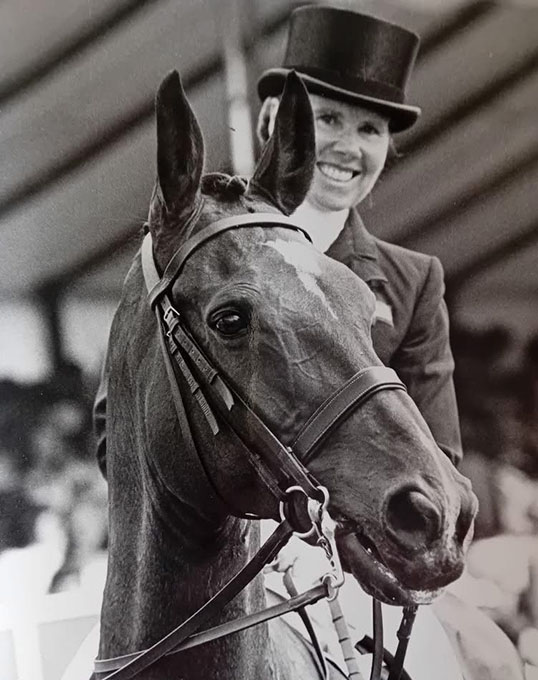
Having come up the levels and succeeded again and again on horses not necessarily bred for the job showcased the unique ability she had to "create a beautifully elastic body movement from any horse. This allowed her to create extraordinary work from relatively ordinary horses. The fact that she could be so successful with a slightly crazy thoroughbred like Wily Imp who had had only modest movement was the proof," Bill Noble stressed.
Judging
Judging at the highest level nationally as a List 1 judge, Trish Gardiner also influenced dressage in her country from that angle. For her various commitments to the sport of dressage in the U.K, British Dressage rewarded Trish Gardiner with the British Dressage Medal of Honour in 2023.
Full Circle
When Charlotte Dujardin and Valegro as well as the British dressage team won two gold medals on home soil at the 2012 Olympic Games in London the feeling of having come "full circle" might be one Trish experienced.
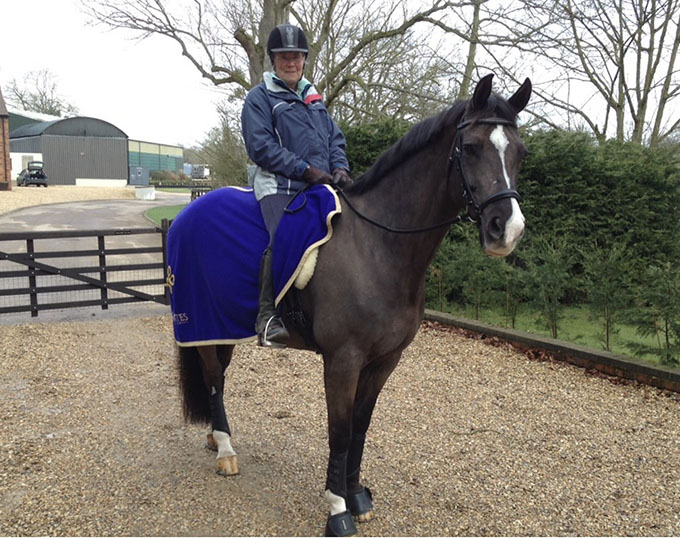
Gardiner fully experienced the golden era of British dressage. As she grew older, she moved a stone's throw away from Carl Hester’s yard in Gloucestershire and being able to hack double Olympic champion Valegro from his prime and well into his retirement on a weekly basis, contributing her part to the well-being of Britain’s legendary dressage horse, if you choose to see it that way. Gardiner also enjoyed hacking Sadie Smith’s up and coming Grand Prix mare Swanmore Dantina during Sadie's time at Hester's.
Carl Hester, a leading figure of British dressage for the past three decades, rode on the same team as Trish at his first European Championships in Donaueschingen (GER) in 1991. They they later became good friends.
"I have lots of really good and lovely memories about Trish. She came over twice a week to hack Valegro and rode him until she was 89“, Hester told Eurodressage at the European championships in Crozet. "She would also sit and watch the training. Trish passed me a lot of knowledge, from Robert Hall as well who was her mentor she really liked.“
An Inspiration
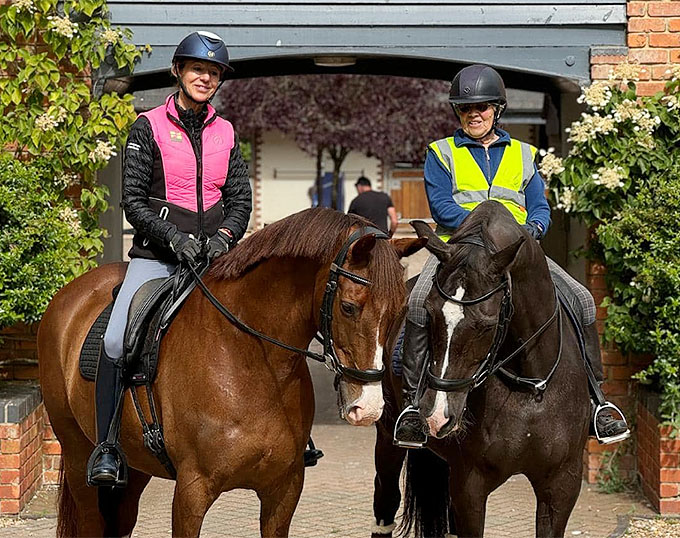
in June 2024
"Trish’s legacy is a testament to her belief in a positive, light, and easy partnership with the horse. For shaping my own journey and for the wisdom she shared, I will always be grateful“, Tessa Thorne told Eurodressage. Bill Noble goes as far as asking, "was she the last of an "old" generation, staying with thoroughbred lightness, or was she the forerunner of a new era, wanting quality movement and harmony, in which the quality of the horse doesn't usurp the quality of the training? Time will tell.“
Let’s hope for the sake of this beautiful sport that the values Trish Gardiner so beautifully embodied, stood for ,and tirelessly passed on to the next generations of riders will be lived up to. There is nothing dressage needs more nowadays than good examples of which Trish was one of the finest.
-- by Silke Rottermann for Eurodressage.com
-- Photos © Elisabeth Weiland, Sally Newcomb archive, Sally-Ann Thompson (Animal Photography)
References
- Jane Kidd, Goodwood Dressage Champions, Kenilworth Press, Buckingham 1994.
- St. Georg Magazine, Seoul 1988 Reiter Olympiade, Hamburg 1988.
- Dorian Williams, The Guinness Guide to Equestrianism, Guinness Superlatives Limited, Enfield 1979.
- Horse & Hound: Meet Trish Gardiner
- Bill Noble on 25th August 2025
- Carl Hester on 26th August 2025
- Tessa Thorne on 27th August 2025
- Sally Newcomb on 31st August 2025
Related Links
The History of British Dressage: "I Thought We Would Get There...In 100 Years!"
From Flying Past to Flying Change - Part V: The Thoroughbred in the 1970s
Halsall, Gardner, Gardiner, Olsen Receive British Dressage Medal of Honour
Scores: 1988 Olympic Games
1978 World Championships in Goodwood - Dressage in the Park
1978 World Championships Goodwood Through the Eyes of Christine Stuckelberger
Bill Noble, "Every Man's Story is Important, Unique"